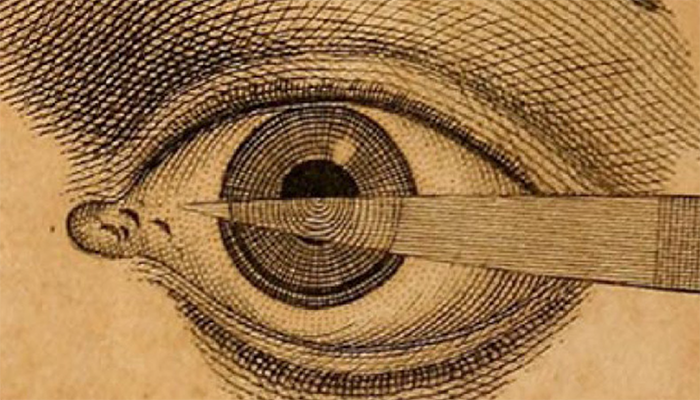
If pioneering astronauts formed colonies on distant planets, how would ophthalmic procedures become established in these new worlds? Perhaps, the best analogy is the migration of cataract surgery to the New World after the 1492 voyage of Columbus.
A desperate colonist might try a medical procedure based on reading about it, but this is unlikely to go well. For example, American newspapers – such as the Boston Weekly News-Letter (September 18, 1735) – recounted the exploits of “Doctor [John] Taylor, Oculist” on the European continent. Subsequently, the Weekly Mercury in Trenton (New Jersey) reported in October 1735 that “a certain person who lives near the Yardley ferry has lately turned oculist,” and that “an experiment upon Mr. Benjamin Randolph has caused him to become quite blind and in great pain.”
Successful migration of ophthalmic procedures to the New World was brought about by experienced eye surgeons who made the voyage. The Spanish colony of Mexico was the first in the New World to have a cataract surgeon. By 1611, Francisco Drago of Genoa practiced in Mexico City as an “oculista” who couched cataracts and removed pterygia. The government moved to expel him to Europe because he was a foreigner, but the outcry of the people and the testimony of the protomédico that no one else could offer these services forced the government to permit him to stay. Drago is almost certainly the oculist who, in 1628, traveled from Mexico to Lima, Peru, to couch the cataract of the government official Francisco López de Caravantes.
The earliest cataract surgery in the English colonies took place in 1751 when surgeon John Morphy couched a cataract on Montserrat. When the patient ran through the streets in “anguish,” the cataract rose to again block the visual axis. The patient remained blind for a year until the cataract spontaneously moved out of the visual axis.
Cataract surgery was brought to the area that became the United States by English ophthalmologist William Stork, who practiced in Jamaica in 1760 and then in Philadelphia in 1761. He practiced between Annapolis and Boston until 1764, when he switched careers and became a plantations agent in Florida, dying from “fright” (presumably a heart attack) during an insurrection of indentured servants.
Cataract extraction (as opposed to couching) was brought to the New World by Frederick William Jericho of Germany, who practiced in Antigua, Montserrat, and St. Kitts between 1772 and 1776 (see Figure 1). He returned to Europe for a short while, but after the American Revolution ended, he practiced in the newly formed United States and then Jamaica between 1783 and 1791.
As in these Earthbound days of old, meeting the ophthalmic needs of pioneers on new planets will require ophthalmologists willing to make the voyage. Any volunteers?
Further reading
- L. de Trazegnies Granda, Sevilla y la Lima de Pizarro-Ensayo histórico (2012).
- CT Leffler et al., “The first cataract surgeons in Anglo-America,” Surv Ophthalmol. 60, 86 (2015).
- CT Leffler, RD Wainsztein, “The first cataract surgeons in Latin America: 1611–1830,” Clinical Ophthalmology, 15, 679 (2016).
- CT Leffler et al., “Ophthalmology in North America: Early Stories (1491-1801),” Ophthalmology and Eye Diseases (July 25, 2017). PMID 28804247.
